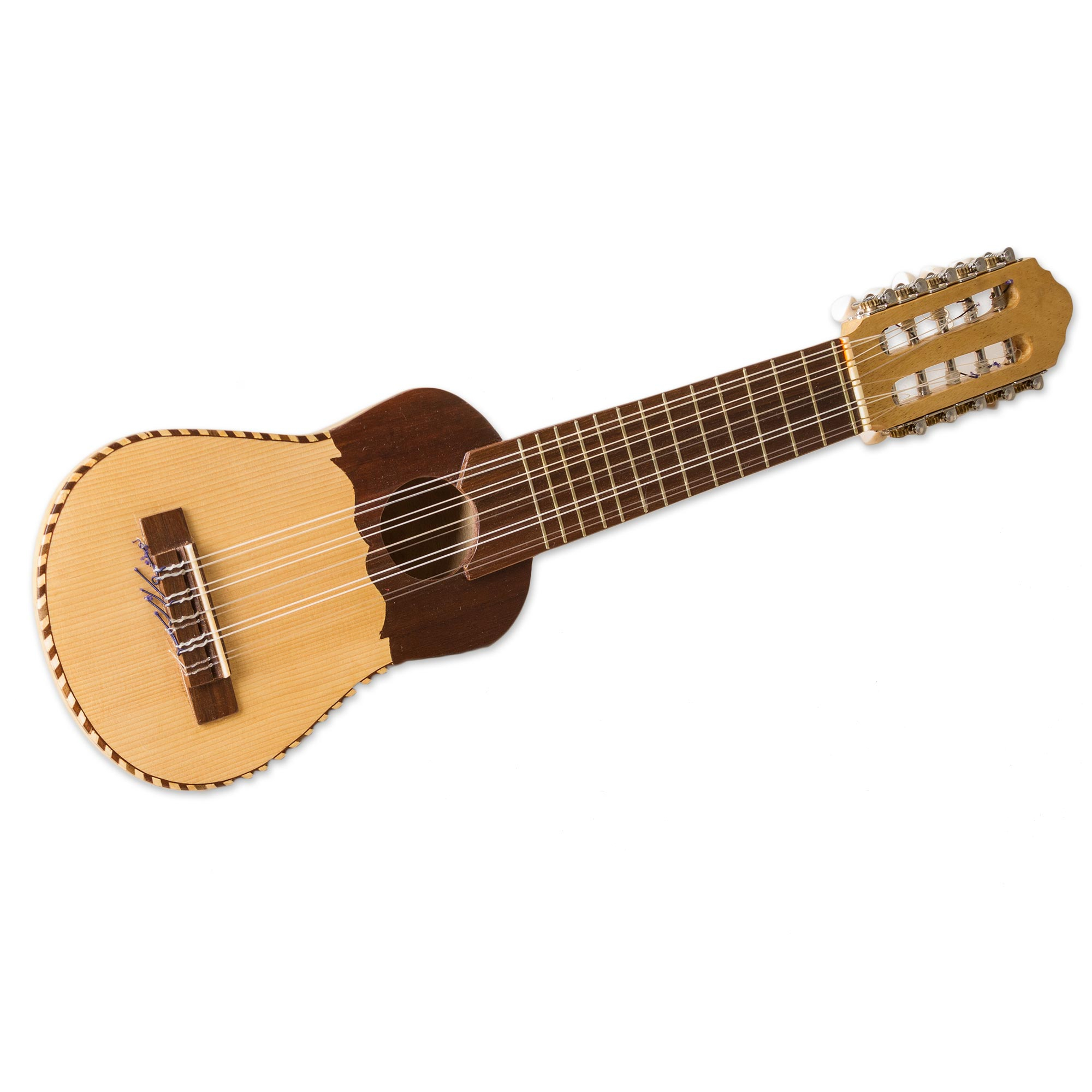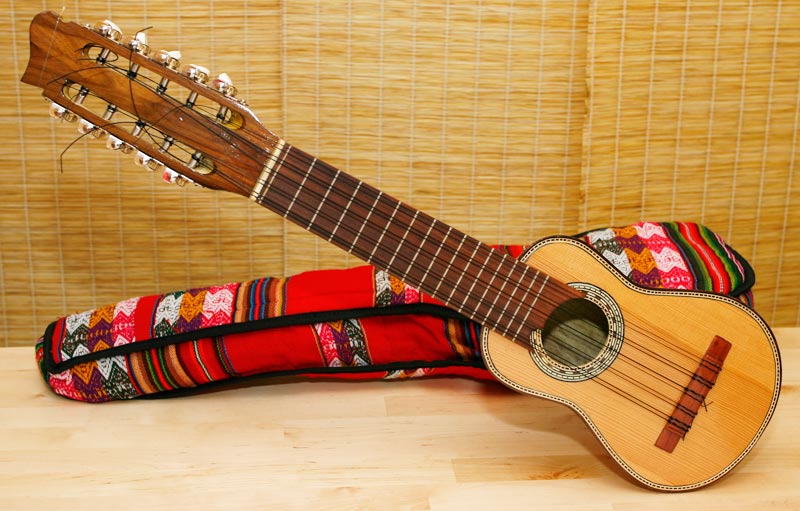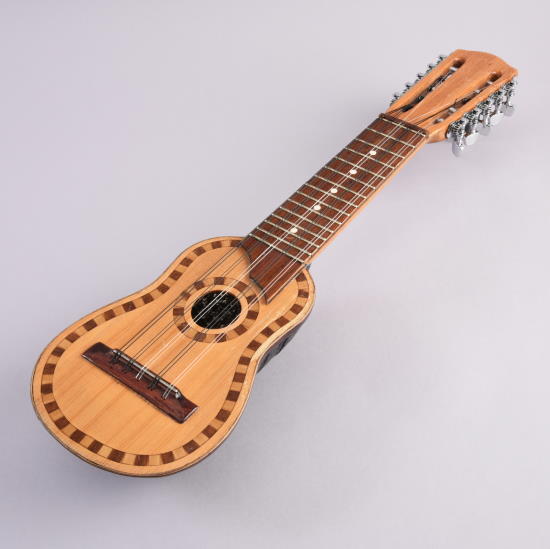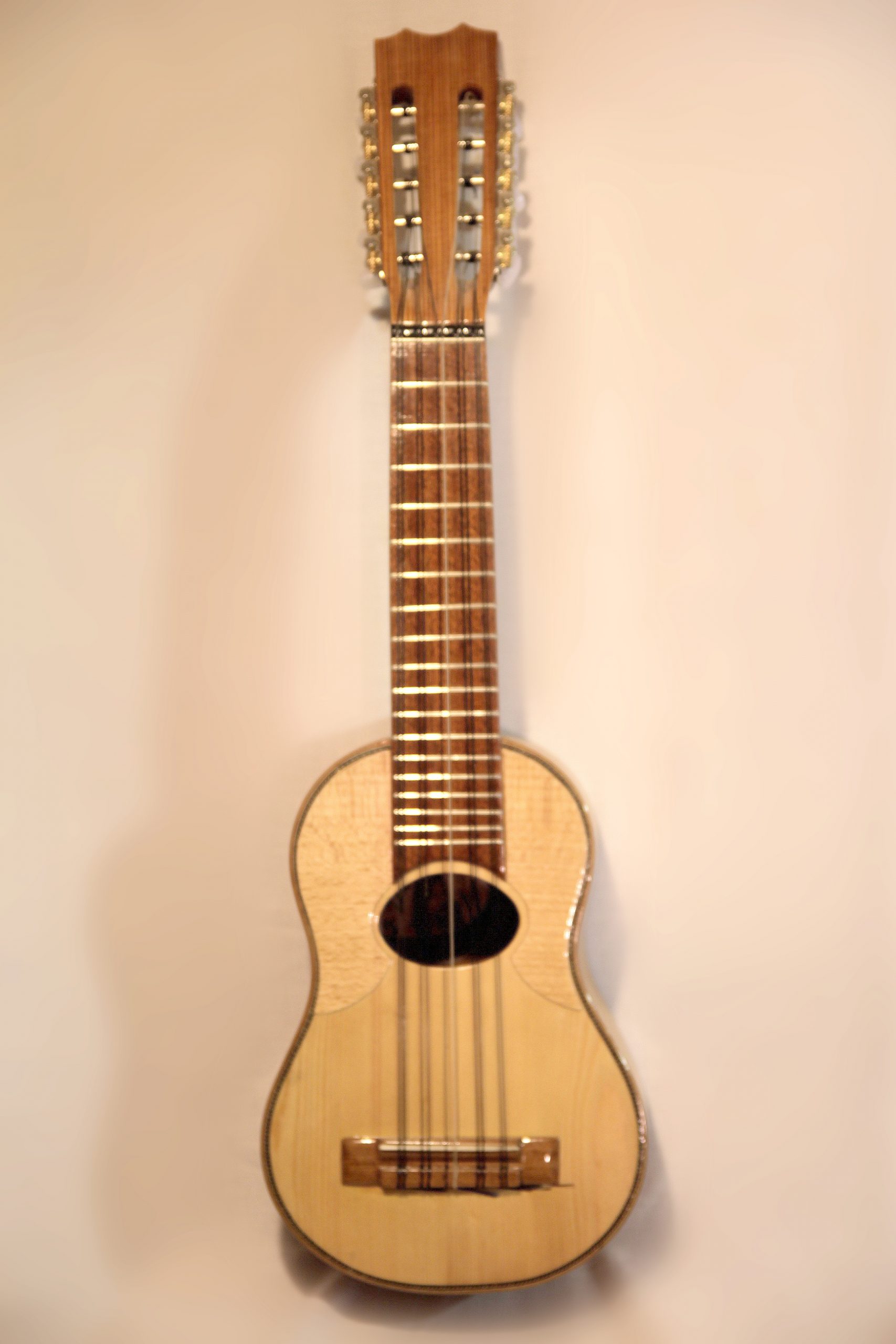
charango · Grinnell College Musical Instrument Collection · Grinnell College Libraries
This is the story of how I started playing charango, a small ukulele-size stringed instrument popular in South America. If you'd like to hear my recordings w.

Semiprofessional Charango with butterfly soundhole LardysWishlists
…area, for example, the common charango is a lutelike or guitarlike instrument of five courses of multiple strings, frequently with a body made of an armadillo shell; it sounds quite differently among Indians, who use thin metal strings, and mestizos, who use nylon strings. The Spanish classical guitar and the… Read More

Kiva Store Peruvian Traditional Charango Guitar with Nazca Bird Musical Bird
Probably one of the most symbolic and representative instruments of Andean music is the charango. It is the one that is most used to interpret its music, because its sound is very particular due to its treble, even higher than that of the classical guitar.

Charango Music instruments, Guitar, Instruments
The charango is a small Andean stringed instrument of the lute family, from the Quechua and Aymara populations in the territory of the Altiplano in post-Colonial times, after European stringed instruments were introduced by the Spanish during colonialization.

Charango Icon Of Andean Music From South America
The charango is a small ten-string Andean musical instrument from the lute family that originated from South America. When the Spaniards arrived in South America, they brought with them the vihuela. The vihuela is considered to be the ancestor of modern-day guitars.

Charango
Wind and percussion instruments ruled the land in the old days. One of the instruments the Spaniards brought was called a vihuela de mano (hand-lute). Over time, the Quichuas in an attempt to copy it created a Charango. What is a Charango. The traditional model is a small 10 string instrument that has been in Andes since the 17th or 18th centuries.

Charango Icon Of Andean Music From South America
Description The back of the instrument, the resonator, is made of an armadillo shell. A curved neck is attached, above which a soundboard with 10 pegs is also attached. All 10 metal strings down from the pegs to a base near the bottom front of the guitar.

Charango (Standard) A Journey Through Music
The instrument was developed as a means of extending the range and versatility of the charango to embrace a more universal repertoire, including classical guitar and lute music. Whereas the charango has a bowl-shaped back and is more closely related to the lute, the hatun charango has the flat back of the chillador, making it a closer relative.

Charango Sangitamiya The Nectar Music
One of the most popular Andean musical instruments is a small guitar with five double strings that looks like a Spanish bandurria. If looked at from the front, there is nothing special, but when you turn it around, it is surprising. Its resonator, which is more or less rounded, is not made out of wood. It's the shell of an animal!

Charango Wikiwand
While this practice has since been banned, the charango continues to be an important part of Andean folk music and a symbol of cultural heritage in Bolivia and beyond. Its high-pitched and distinctive sound, along with its versatility as both a solo and accompanying instrument, make the charango truly one-of-a-kind.

Charango [OS] [2104x1700] r/InstrumentPorn
The Charango is a post-colombian instrument, that is, its existence came about as a result of the Spanish conquest. Prior to the arrival of Europeans to the Americas, there were no stringed instruments at all. Wind and percussion instruments dominated the musical landscape.
Charango instrumento musical tradicional da América do Sul
The charango is a small Andean stringed instrument, from the Quechua and Aymara populations in the territory of the Altiplano in post-Colonial times, after European stringed instruments were.

The charango, a unique and beautiful Andean musical instrument
The charango is a small Andean stringed instrument of the lute family, from the Quechua and Aymara populations in the territory of the Altiplano in post-Colonial times, after European stringed instruments were introduced by the Spanish during colonialization.

Das Charango musiculum
A charango is what you'd get if you took a classic guitar, scaled it down to about the size of a ukulele, and made it out of an armadillo shell. It's also one of the most celebrated instruments in Andean culture, with a long history and an ongoing presence in South American folk music.

Charango Modelo 01
The charango is an Andean stringed instrument that, while compact, carries a rich, vibrant sound that has echoed through the mountains and valleys of the Andes for centuries. About 66 cm (26 in) long, it traditionally features ten strings in five courses, though you'll find variations in different regions.

Lute (charango) Museum of Fine Arts, Boston
So, what's a charango? This diminutive, multi-stringed, multi-coursed, hollow-bodied axe offers up sweet sounds reminiscent of a mando, a high-strung guitar, or a uke, and projects surprisingly well for such a small instrument.